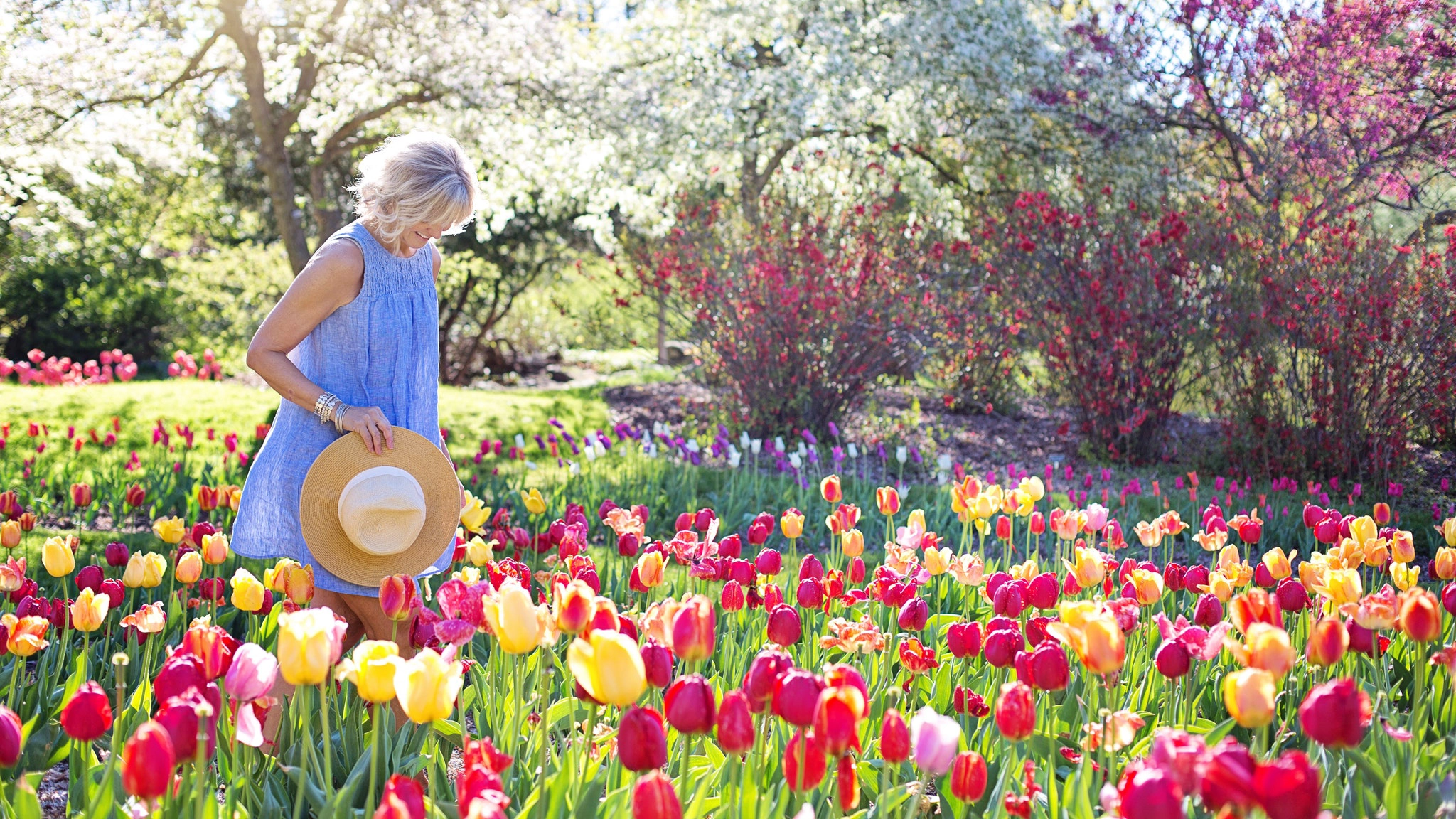How to create a low-maintenance, self-sustaining garden

Do you have a nice little front yard or backyard? You can turn it into a beautiful, low-maintenance garden that bears flowers (perhaps even fruit!) if you’re willing to do a little work initially. We’re Flewid Friendly, and we make edible rice straws that help our oceans. We’re an ecologically conscious company that’s interested in anything to do with sustainability and environmental protection – of which gardening is one!
Let’s start by looking at what all these fancy terms mean.
What do these big words mean?
Low-maintenance is somewhat self-explanatory. It means a garden that doesn’t take a whole lot of effort to maintain. So no grass borders or invasive plants, and no major digging.
Self-sustaining means that in the long term, the garden will sustain itself. So you won’t need to buy or bring in anything from outside for your garden. It will make its own fertilizer, pesticide, seeds, and everything else it needs (poet and I didn’t know it!)
Sustainable means the same as self-sustaining in this context.
Another word you’ll see a lot of is ‘organic’. It’s used ambiguously by many businesses, but here we use it to mean natural. So there are no synthetic materials involved in the gardening process.
Now that you know what you’re getting into, let’s jump right into it with some soil prep.
Soil preparation
It isn’t the most fun part, but it’s the part you’ve got to do first.
Evaluate the soil condition, and see what needs fixing. Is it dense clay, for instance? Is it hard-packed? Is the garden full of weeds that need removing? Are the existing plants struggling? The answers to these questions will tell you what you need to do to amend the soil – add some pebbles, throw on compost, put on cardboard, and so on.
Our first major tip is this: use cardboard to suppress weeds.
There’s no digging involved. The cardboard works by blocking light, so the plant dies out. If it’s a large plant, cut it at the base, and lay the cardboard right on top. Grassy patches can be treated with this as well. You may have to do a second application. The cardboard, assuming it’s free of staples and tape, will rot down completely in a couple months, and you’ll have a weed-free growing space.
If you want to give the soil a boost, throw some compost onto it. Bulk-buying will be the most affordable solution. An inch-thick layer will be enough. To start the self-sustaining process, put down any materials you cut as mulch, so it will rot down in time and add to the compost layer.
You can start a little compost pile, adding kitchen scraps and such to it. It’ll make your household a low-waste one. You can also toss in our edible rice straws once you’re done using them.
Now to the fun stuff!
Choosing the plants
DO NOT go straight to a garden center without planning. You’ll see too many options, want all of them, and you’ll end up with a disorganized collection of plants that may not be low-maintenance or self-sustaining. You need to choose your garden’s inhabitants wisely.
For one, go with perennials. These are plants that live for many years (for example, butterfly bush), as opposed to living just a year and dying after their growing season (nasturtiums or petunias, for example). You can find edible perennials such as kale, spinach, berry bushes, mini-trees, and various others. Strawberry is one that’s ornamental, edible and perennial.
You’ll need to find out what zone you live in, and what plants are perennials there. Plants that survive the winter in Florida probably won’t in Oregon, for instance.
If you want some seasonal color, that’s possible too! Just find plants that self-seed. This means that the plants will make seeds and disperse them into the soil before they die back, so the seeds will be in the soil, ready to germinate when the next season arrives. You can help these along by collecting and sowing the seeds, but that shouldn’t be necessary if the plant’s healthy.
Make a sort of shortlist, decide on the number of plants you want, and then go to your local garden center.
Low maintenance or no maintenance?
Now, here’s a question you need to do some thinking about, so grab an iced tea and one of our edible rice straws, and mull it over. Here are some points to keep in mind:
A no-maintenance garden is ideal if you’re retired or close to retiring, and have back pain or similar issues that make gardening difficult. You’ll be able to enjoy your garden without having to do a thing. Most people tend to enjoy gardening once they start, and don’t mind doing a little every now and then. A low-maintenance garden would mean anything between an hour to a couple hours’ work every week, depending on the size. If you want a tidy garden where you have some control, you should go with a low-maintenance garden. If, on the other hand, you don’t mind a wild-looking garden where things are sometimes out of your control (what grows and what doesn’t, for instance), no-maintenance may be better for you. Most people want some degree of control. Gauge your needs, wants and abilities before you make your decision. Of course, it is kind of flexible – so for instance if you get plants that need a little work but decide you want to let the garden do its own thing, that’s totally doable. Gardening is a hobby where you get a lot of flexibility.
Adding other elements
Plants are interesting – even exciting – but you need more than just that to make your garden interesting in the long term. Here are some elements we recommend you work into your garden:
- Variety – Colors, heights, textures, patterns. Don’t have a solid block of green, or plants that are all the same size. Throw in some mulch and some interestingly textured plants for some textural depth, and get leaves, colors and fruit of different types so you have different patterns creating a pleasant contrast.
- Metal or wood – A nice little archway, trellis, or wood fence will add a lot to your garden. As long as it’s sufficiently visible, that is! Plus, trellises can be a lot of use if you plan to grow vines such as beans or climbing roses.
- Birds – Put a birdfeeder and birdbath in a quiet spot, away from humans and pets, and you’ll invite some beautiful birds to your garden. Their wonderful little songs will make sitting in the garden a pleasant experience.
- Water features – A fountain or a pond (or a combination of both) will add some sound to the space, and it’ll look great too. If you decide to go with a pond, a little bridge over it will add a delightful touch of whimsy.
Putting the local wildlife to work!
Attracting birds to your garden has more benefits than entertainment. Birds and other wildlife can in fact help you maintain your garden better! Using the local wildlife is a major principle of organic gardening.
Birds, hedgehogs, rabbits, toads and other little creatures eat pests and weeds, and help pollinate your flowers. In addition, they’ll also take their share of food from the garden, and kind of prune the garden a little bit. Birds are an important element in the seed distribution process, so let them have some fruits every now and then – they don’t mind over-ripe ones.
Letting your garden go wild has the added benefit of attracting beneficial insects such as ladybugs. These eat common pests like aphids, and don’t harm your plants. Well, the occasional leaf-cutter bee might cut a bit out of a leaf, but seeing one buzz off with a leaf in its grasp is completely worth it.
Consider putting out food for local wildlife, and make sure you avoid using football netting or other structures that they could get trapped in. Foxes, hedgehogs, ducks and even crows will often get tangled in netting, which can cause constriction wounds in the animal. Left alone in a friendly environment devoid of dangers, they’ll help your garden, and you’ll get to see some wildlife up close.
Using edible rice straws in the garden
Flewid Friendly makes biodegradable straws that you can use in hot or cold drinks, and once you’re done, you can toss the straw onto your compost heap. However, if you don’t have a compost heap or want other tips for using our edible rice straws, here are a few:
- Feed them to your garden’s inhabitants. Soggy straws, used in hot drinks, can be used like pasta. However, if you don’t feel like using them in your cooking, you can give them to the birds and beasts in your garden instead. Ducks, cats, hedgehogs and birds will enjoy it!
- Use them to mark places. If you’ve just sown or buried something, you can use a straw as an impromptu marker. Stick it into the ground straight up, and it should last a fairly long time before the buried section decomposes.
- Use them to recharge the groundwater. If you’ve just hosted a party and you’re left with a bunch of used straws, you can dig up a low area of your garden, put the straws in, fill them with sand, and now whenever it rains, the rainwater collecting in the depression will be able to seep down that little bit faster.
So this was a guide on how to create a low-maintenance, self-sustaining garden, from Flewid Friendly – the makers of edible rice straws. You can learn more about the product or support the company by purchasing it here. We have other products coming soon, so keep your eyes peeled!

